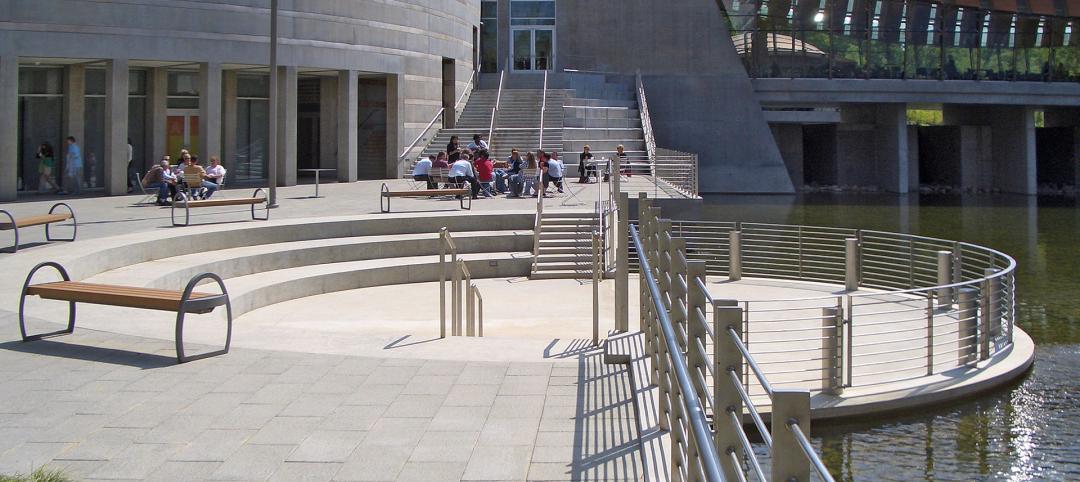BD&C: What is happening with your corporate portfolio? Are there any strong commercial markets right now?
Samuel S. Unger: Most U.S. markets are still soft. There is some perceived bottoming in some very local submarkets in San Francisco, San Jose, and certain New York City submarkets. Downtown Seattle is tightening. Other markets have limited inventory in given classes of buildings, so there is better control over those segments. I am also surprised by how tight some of the smaller Canadian cities are. Researching the brokerage house reports looking for consensus is still helpful, as are ongoing discussions with trusted brokers. We always try to stay ahead of the requirement by trying to understand forward momentum in given markets. It’s also important to note that markets can be quite local, varying by view and size of requirement, so generalities need to be closely tempered by the requirement you are presenting to the market.
BD+C: Where is the best place to invest in real estate right now?
SU: There has been competition for trophy assets in commercial real estate, and a fair amount of money chasing discounted retail assets, according to what I hear. Unfortunately, real estate assets are very difficult to dispose of in weak markets, as too many have discovered to their chagrin. Diversification still rules.
‘Try to understand forward momentum in given markets’
BD+C: When is the commercial real estate market going to rebound?
SU: When you see three or four quarters of positive white collar job growth, you might be tempted to get out of your foxhole. But a critical caution is the fact that all markets and submarkets are local, and impacted by the movement of major companies or particular industry segments.
BD+C: In regard to commercial properties, are owners upgrading or reconstructing these properties? How long does it take for an owner to see a return on their investment after upgrading or reconstructing a property? How is this impacting their portfolio?
SU: This is a thesis question. It all depends on an owner’s portfolio, competitive pressure, leverage, and access to capital. We’ve seen a number of owners of Class A property begin to do reasonable upgrades to comply with the lower tiers of LEED certification because they believe they need this to remain competitive in the market, and we welcome that.
BD+C: Is it more advantageous to construct a new building, or upgrade an existing structure?
SU: I stress that we as an organization are not owners of buildings for reasons specific to the Ernst & Young partnership. We have a very competent advisory services business that assists owners with questions like this. As with any complex question, it all depends on the specific market and the arbitrage available in making a conversion.
BD+C: Are there particular mistakes or errors that you see BD+C readers making in regard to commercial real estate?
SU: If you are talking ownership, the first law is that real estate is volatile and illiquid, and keeps absorbing capital. The second law is to remember the first.
BD+C: How can BD+C readers—architects, MEP engineers, and contractors—work more effectively with a firm like Ernst & Young and other CoreNet members?
SU: We encourage contact with design professionals and contractors. We mandate that members of our real estate group get involved with national and local organizations, and we’re not shy about it. I encourage professionals to get involved with CoreNet. It’s important to realize that the organization encourages mutual long-term benefit—no quick sells, no heavy marketing, but a great opportunity to let people understand both the type of individual you are and something of your business over time. The people of CoreNet are also a tremendous resource, with literally hundreds of years of collective experience in the allied professions.
BD+C: What do architecture, engineering, and construction firms continually do wrong in their dealings with organizations that are CoreNet members? What mistakes do you see them making? What advice would you have for AEC firms to work more effectively?
SU: Great question, and another thesis topic. Approach CoreNet members as a long-term investment. Share experiences and understand the pressures and questions of your potential clients. Don’t talk consultant speak—if asked, talk solutions. Otherwise, grab a beer and share war stories.
BD+C: What is the most important thing you can take away from your involvement with CoreNet on both a personal and professional level?
SU: CoreNet has been a tremendously valuable resource for me. I have established friendships and had the opportunity to go beyond professional relationships with a number of our members. I have also realized that many of the issues I faced, both personally and professionally, are shared problems, with shared solutions. On a professional level, deeper discussion of the issues we face as an organization, and the similarities to the issues faced by my colleagues in CoreNet, help generate more thoughtful solutions. The opportunity to review strategies and tactics for these issues is valuable, as is the review of resources available through service providers, contractors, and suppliers. BD+C
Related Stories
| Dec 16, 2014
Architect Eli Attia sues Google over tall building technology
Attia and tech company Max Sound Corp. have brought a lawsuit against Google because of Flux, a Google X-developed startup launched in 2014. Flux creates software to design environmentally-friendly buildings in a cost-effective way.
| Dec 15, 2014
SHoP Architects plans to turn NY's Seaport District into pedestrianized, mixed-use area
The scheme includes a proposed 500-foot luxury residential tower that would jut out into the harbor, extending the Manhattan grid out into the waterfront.
| Dec 15, 2014
Frank Lloyd Wright School of Architecture launches fundraising campaign for independent incorporation
The Frank Lloyd Wright Foundation announced today that it approved a possible path toward independent incorporation of the Frank Lloyd Wright School of Architecture by raising $2 million before the end of 2015.
| Dec 15, 2014
Studio Gang tapped for American Museum of Natural History expansion
Chicago-based Studio Gang Architects has been commissioned to design the $325 million Gilder Center for Science, Education and Innovation at the American Museum of Natural History in New York.
| Dec 12, 2014
Dunkin’ Donuts launches certification for green restaurant buildings
The company aims to build 100 new DD Green-certified restaurants by the end of 2016.
| Dec 12, 2014
COBE's striking 'concrete finned' scheme wins competition for Adidas' flagship building in Germany
Danish firm COBE has been announced the winner in a contest to design a new Adidas flagship building in Herzogenaurach, Germany. It beat out 29 other teams, including REX and Zaha Hadid.
| Dec 12, 2014
SOM names winner of One World Trade Center photo contest
Gerry Padden's winning photo offers a striking juxtaposition of the Brooklyn Bridge with the sparkling One World Trade Center tower.
| Dec 11, 2014
2015 Architecture Firm Award goes to Ehrlich Architects
The AIA Architecture Firm Award, given annually, is the highest honor the AIA bestows on an architecture firm and recognizes a practice that consistently has produced distinguished architecture for at least 10 years.
| Dec 11, 2014
Moshe Safdie awarded 2015 AIA Gold Medal
The AIA Gold Medal, voted on annually, honors an individual whose significant body of work has had a lasting influence on the theory and practice of architecture.
| Dec 10, 2014
International Olympic Committee releases first images of new HQ in Switzerland
Designed by 3XN, the new headquarters is located within a park on the shores of Lake Geneva and adjacent to historic Château de Vidy, which has been the iconic home of the IOC.
















